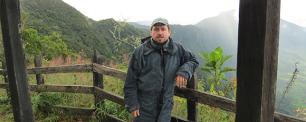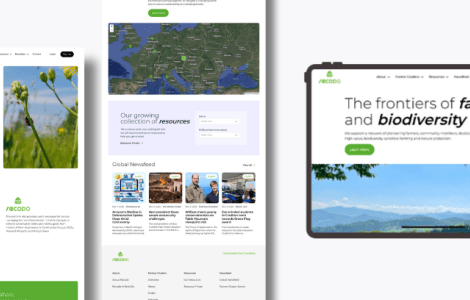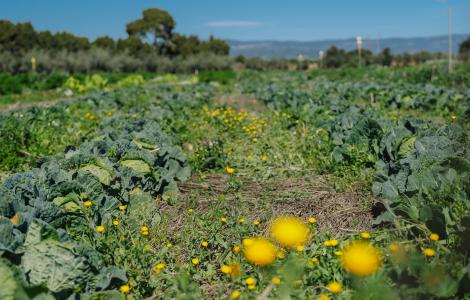“There are unknown species living right next door”
Raúl Bonal (Madrid, 1974) is a researcher at the University of Extremadura and is associated researcher at CREAF since 2009. In the Western world, what Raúl has achieved has become quite rare: describe a new species. The species discovered by Raúl is known as the “holm oak spider” and was given the Latin name Cheiracanthium ilicis. More such discoveries may be in store in the not-too-distant future.
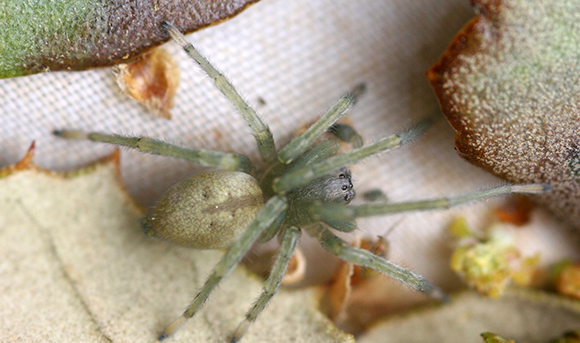
Why was the spider given this name?
The spider is within the Cheiracanthium genus, so that part was obviously not up to us. For a species name we gave it icilis since this word refers to the holm oak (Quercus ilex), the tree where we always find the spider. So, based on the scientific name we could call it “the holm oak spider.”
"Though given the limited knowledge of arthropods in the Mediterranean Basin I wouldn’t rule out discovering others"
Where exactly does this arachnid live?
Though we think that it may be found in other areas of the Iberian Peninsula and in other Mediterranean Basin countries, for the moment we have found it in the provinces of Toledo, Ciudad Real, and Caceres, always with isolated dehesa [ecosystem] holm oaks. This landscape is typical to the central and mid-western part of Spain, consisting of dryland fields with isolated tress which are mostly holm oaks along field edges or isolated in the middle of cereal fields, serving as a testimony to the historic forests which once covered the Iberian Peninsula and have been undergoing clearing for centuries.
What are its noteworthy characteristics?
This species of spider has nocturnal habits; during the day it is found hidden in small crevices such as acorn caps, and it covers these spaces with silk for additional refuge. At night it leaves it hiding place to hunt and actively pursue its pray. It is a fairly generalist carnivore since it feeds on all kinds of small organisms such as worms, leaf miners, etc. Its whole lifecycle occurs in the trees and the adult phase is very short, normally lasting a couple of months between May and July. Though it is small, about a centimeter in length, the chelicerae – the mouthparts with which it injects venom – are proportionally quite large compared to other species of its genus.
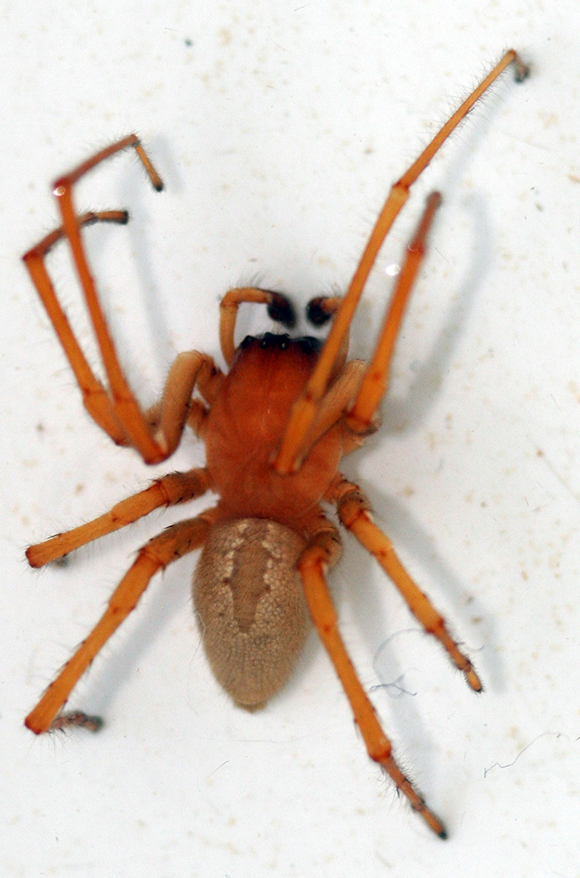
It is the first species you have discovered?
Yes, though given the limited knowledge of arthropods in the Mediterranean Basin I wouldn’t rule out discovering others.
"The worst part is a high degree of job insecurity that makes it impossible to plan one’s personal or professional life for any extended period of time"
Are there still many species to be discovered here?
I believe that there are. Mediterranean ecosystems have a high potential for new discoveries. They are more diverse and less studied than those of Northern Europe. There are unknown species living right next door.
That seems to be another great reason to conserve rural landscapes such as this.
Yes, of course. From the perspective of conservation, the preservation of isolated trees in agricultural landscapes needs to be given more attention; these are not only a refuge for common forest species, but also for new species which remain to be discovered.
It is a very laborious process to discover and declare a new species?
Two years ago we already knew that we were dealing with a new species, however, the description though laborious didn’t take very much time. We began by confirming that the copulatory organs of males and females were different from other closely related species, and the genetic analysis confirmed this. Once we were sure, we wrote the scientific article which was evaluated and published in the international journal Zookeys, and this essentially established the acceptance of Cheiracanthium ilicis as a new species for the scientific community.

So tell us, how did you find the holm oak spider?
It was based on samplings from a larger study. With that project we wanted to demonstrate the importance of biodiversity conservation of isolated holm oaks in the middle or borders of crop fields, but we definitely didn’t expect to find new species!
"Mediterranean ecosystems have a high potential for new discoveries. They are more diverse and less studied than those of Northern Europe"
How does it feel to discover a new species? We can imagine that this must be an important achievement for a researcher.
It is a strange feeling because at the beginning you think that you are the first person to see the species. However, I later thought that since it appeared in an environment with a significant human presence, it is possible that someone would have seen it before though not knowing that it was a different species. In any case, we were the ones who rescued it from anonymity and it is hugely satisfying to know that you are increasing knowledge about biodiversity, about which there is still a lot to discover.
I suppose that discoveries such as this help explain why one might want to be a researcher.
Yes, since I was young I was always interested in observing and discovering why things were the way they were, and particularly fascinated by living things.
"I have been lucky to have been able to travel to many parts of the world thanks to my job, always going to where the Quercus are!"
What is your usual field of research?
My main line of work is interactions between animals and plants. Particularly, between species of the Quercus genus including oaks and holm oaks and herbivores, predators, animals that disperse their acorns such the coleopterans of the Curculio genus, the weevils. Also, after my postdoctoral stay with the Molecular Systematics group at the London Museum of Natural History, I started using molecular techniques in my studies. Since 2008 I have been combining my main line of work with occasional forays into other fields such as forest genetics.
What is best and worst about your job?
The best part is that it is not monotonous, there are always new challenges to face and new things to learn; I can do what I have always enjoyed. The worst part is a high degree of job insecurity that makes it impossible to plan one’s personal or professional life for any extended period of time.

Is there any part of the world which you would like to study and explore in particular?
I have been lucky to have been able to travel to many parts of the world thanks to my job, always going to where the Quercus are! Along these lines, I would probably like to visit the forest of the Yunnan province in China, one of the areas of greatest oak biodiversity in the world. However, these species aside, the most remarkable place that I would like to visit would be the Galapagos Islands.
"Since I was young I was always interested in observing and discovering why things were the way they were, and particularly fascinated by living things"
Bringing us back down to Earth, where are you based at and carry out your activities normally?
I am a researcher at the University of Extremadura and I work at the School of Forestry and Environment which is located in Plasencia. Recently, a number of different research groups from the University have merged to form a new university research institution called INDEHESA whose mission is research in the deheasa and other silvopastoral systems of particular interest to conservation.
Though working at a distance, you are also associated with CREAF. How did that happen?
That happened via a collaboration with Josep Maria Espelta who has a line of research which coincides with my own in a number of aspects. Since 2006 I have been working with a number of different researchers from the center and I am associated researcher at CREAF since 2009.
ARTICLE:
Morano, E., Bonal, R. (2016). Cheiracanthium ilicis sp. n. (Araneae, Eutichuridae), a novel spider species associated with Holm Oaks (Quercus ilex). Zookeys 601: 21-39. DOI: 10.3897/zookeys.601.8241


